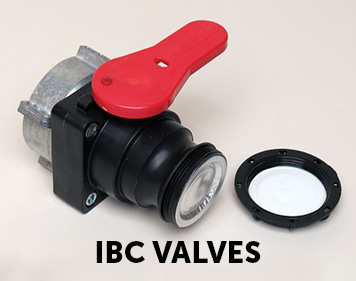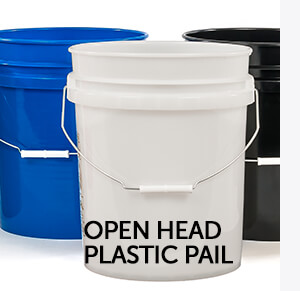Drum Covers and Lids Buyer's Guide
Before choosing wholesale drum covers and lids such as a 55 gallon drum cover or 55 gallon drum lid, know where your drums are to be stored, outside or inside. Storing drums outside the plant saves valuable space, but they need protection from the elements, especially from water and sunlight. Consider plastic covers for them.
However, if you are also storing drums inside, you need to know whether the drums will be stacked. Not to mention, there's the universal case of needing to know the impact of what product materials you store in the container.
So, let's break those factors down:
The Drum Covers and Lids Materials & Which Is Best Geared For Certain Drum Inner Contents
Plastic Drum Covers and Drum Lids
Plastic Drum Covers and Lids are better served for outside settings because they can avoid corrosion brought on by the air elements (like rainwater) on top of shielding products from dirt, dust, moisture, insects, and other contaminants. This makes them ideal for the protection of electronics, chemicals, inks, paints, pharmaceuticals, and food.
Typically being made of low density polyethylene (LDPE) helps this particular material of drum covers and lids to perform these elements so well. Why? LDPE is a standard for lids because it is very flexible and moldable in comparison to more rigid high-density polyethylene (HDPE) that is usually reserved for the body of plastic containers like pails that need to be sturdy or for pullover covers that protect groups of drums on pallets stored outside, keeping rain and other contaminants out of the containment sump. The fitted, heavy gauge vinyl and HDPE cover resists UV and temperature extremes. On the other end, LDPE is used for lids because its flexibility allows for maneuverability that is required with such a frequently opened item for filling and accessing inner drum contents.
Linear Low-Density Polyethylene (LLDPE), is similar to LDPE, but LLDPE boasts higher tensile strength and puncture resistance, so it is another common plastic drum cover and plastic drum lid source.
Example: 9006
Both LDPE and LLDPE possess high heat resistance plus good moisture resistance, so plastic drum covers and lids are always a good choice.
Metal Drum Covers and Drum Lids

Steel Drum Covers and Lids are good for indoor storage and heavy transportation, each case bringing the likelihood for much stacking, possible nicking and contact in warehouse spaces, and frequent moving. Therefore, steel is the most ideal choice due to its natural hardiness. There are so many different gauges in the world of metal drum lids available that offer ranges of thickness. Also, many come supplied with impact and mold resistant EPDM rubber gaskets that are even more relevant in storage spaces where items are often packed together, sometimes in more humid areas where moisture can grow and cause damages to inside contents.
Stainless steel drum covers and lids are great options for corrosion resistance if your drum lids will be placed on drums stored in environments that would corrode standard carbon steel.
Example: 1855CVR


Powder coated steel drum covers and drum lids are the prime safety solution against chemicals and if hazardous materials occur in your environment and/or in the drum containers that the lids will go on. But the caution-oriented makings of power coated drum lids and drum covers go beyond just that.
Many of these particular drum covers and lids, which go by hazardous waste drum lids, also can:
- Have padlocks, anti-leaking and impact resistant gaskets, and vents that relieve pressure buildup for your open head drums
- Automatically close and latch to eliminate a chance for fires
- Require a screwdriver and wrench to attach and remove
- Control vapors to comply with EPA and NESAM* regulations
- Comply with FM approved standards, OSHA, and NFPA requirements for closed container storage of flammables
Aluminum safety drum covers also combat hazards in the arena of flammables. They direct smoke and gases down and across the opening, cutting off the air supply, and extinguishing flames in seconds.
Now, with your deeper understanding of the various types of drum covers and drum lids, you can feel more confident about the right one to select for your particular drum products and drum settings.









